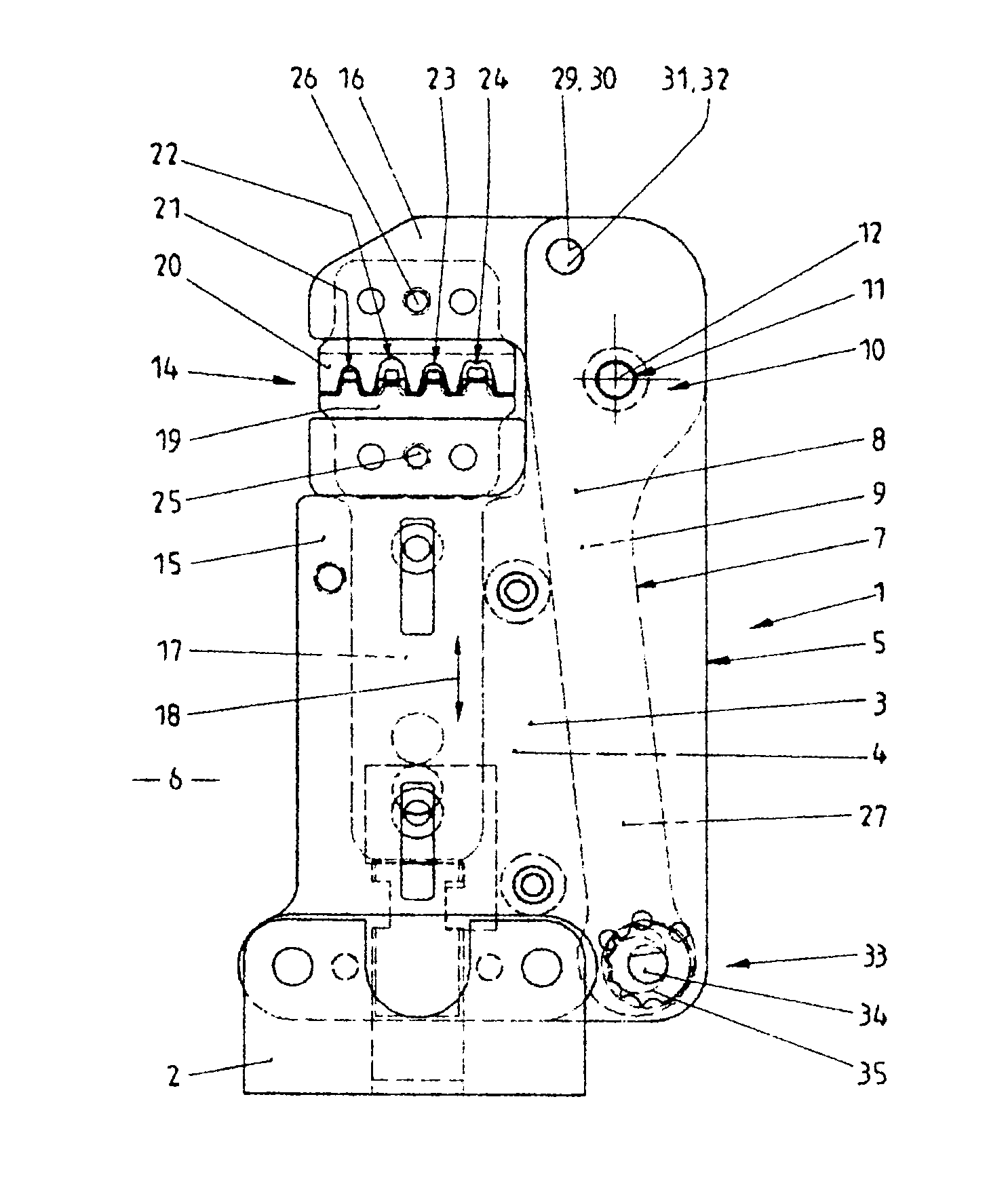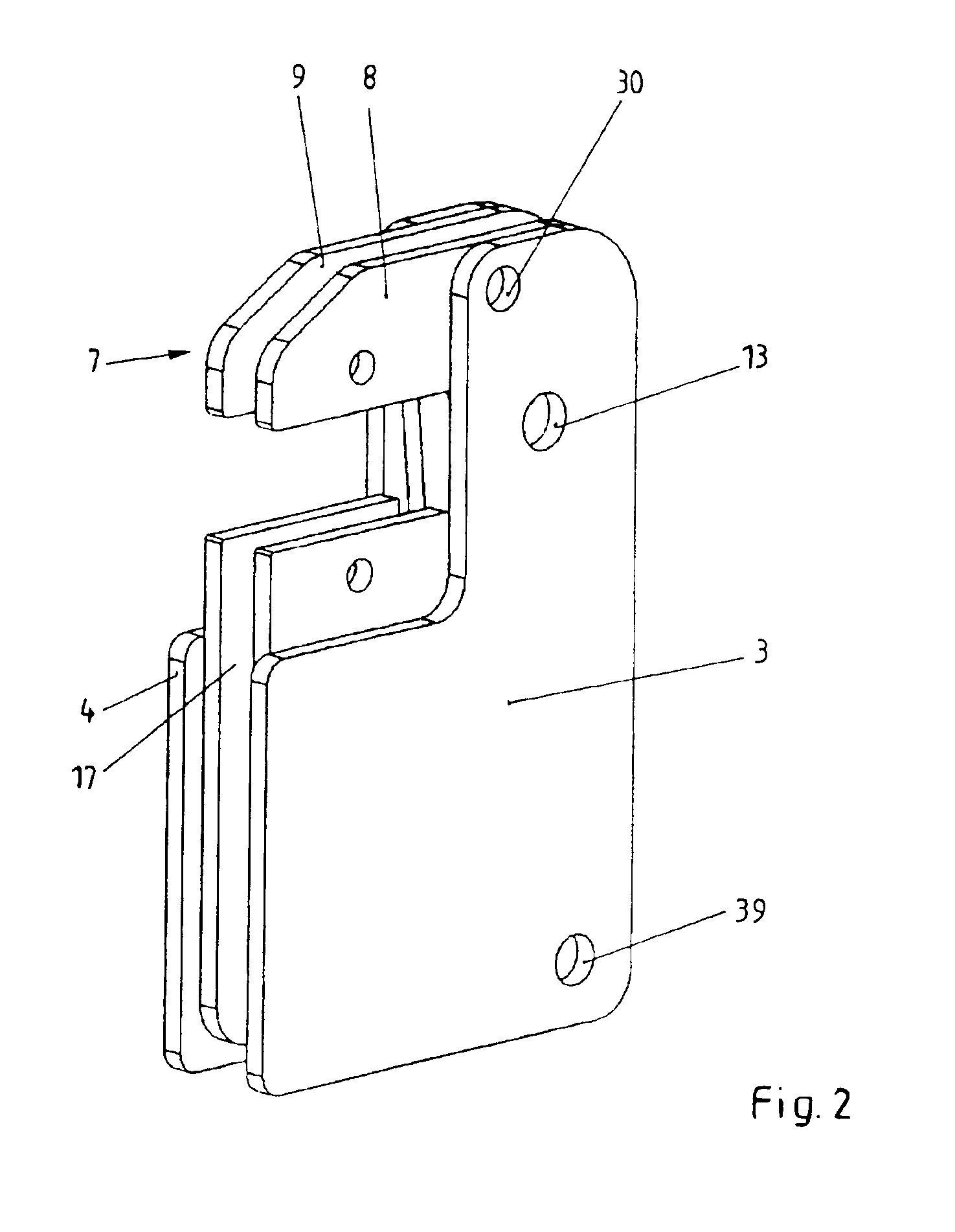Pliers head for pressing work pieces
- Summary
- Abstract
- Description
- Claims
- Application Information
AI Technical Summary
Benefits of technology
Problems solved by technology
Method used
Image
Examples
Embodiment Construction
[0028]Referring now in greater detail to the drawings, FIG. 1 illustrates a novel pliers head 1. For example, the pliers head 1 may be connected to an electrically driven tool or an otherwise driven tool. For this purpose, the pliers head 1 includes a connecting element 2. The design and arrangement of the connecting element 2 is of no special importance to the present invention. Consequently, the connecting element 2 and the drive to be connected to the pliers head 1 by the connecting element 2 to form pliers are not explained in great detail. The design of the drive for the novel pliers head 1 may be conventional as known from the prior art.
[0029]Two cover plates 3 and 4 are fixedly connected to the connecting element 2. The cover plates 3 and 4 together form a stiff housing 5. The design and arrangement of these cover plates 3 and 4 is chosen to result in a preferably stiff unit which is comparatively resistant to bending. The two cover plates 3 and 4 are arranged to be symmetric...
PUM
| Property | Measurement | Unit |
|---|---|---|
| Force | aaaaa | aaaaa |
| Shape | aaaaa | aaaaa |
| Resilience | aaaaa | aaaaa |
Abstract
Description
Claims
Application Information
 Login to View More
Login to View More - R&D
- Intellectual Property
- Life Sciences
- Materials
- Tech Scout
- Unparalleled Data Quality
- Higher Quality Content
- 60% Fewer Hallucinations
Browse by: Latest US Patents, China's latest patents, Technical Efficacy Thesaurus, Application Domain, Technology Topic, Popular Technical Reports.
© 2025 PatSnap. All rights reserved.Legal|Privacy policy|Modern Slavery Act Transparency Statement|Sitemap|About US| Contact US: help@patsnap.com



